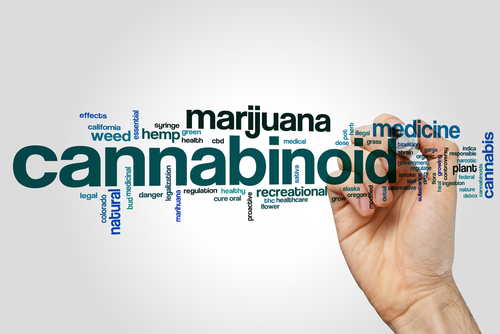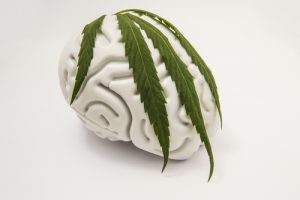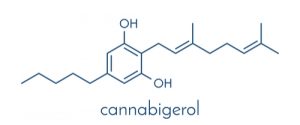Top 7 Cannabinoids
Posted 7 years ago by Ian Shutts

There are plenty of cannabis enthusiasts out there who are only familiar with one or two of the active compounds inside marijuana. In fact, there are well over 400 active components inside marijuana that make it such an effective medicinal substance. The chemical profile of cannabis contains more than just cannabinoids, but also terpenoids and other substances that work synergistically with each other to create a healing effect. Most of us identify with the psychoactive compound called THC, but marijuana is much more involved than this single cannabinoid.
It would require an entire research paper to go into the details of every single cannabinoid. But this article will give a little bit of information about the top 7 cannabinoids present in marijuana. It will surprise you how many cannabinoids there are inside the herb that you didn’t know about, and how they are contributing to the effect that you feel when you use it. Knowing about more than just THC and CBD will make you something like a marijuana expert in your smoking circle! So keep reading to learn more about the active compounds inside cannabis.
THC – the most famous cannabinoid

The most well known cannabinoid is THC, and rightfully so. This is because it is the one responsible for making you feel stoned. It has psychoactive properties, meaning the psychedelic cerebral effect you feel after smoking dope is largely thanks to THC. However, THC also gives the user many medicinal benefits, such as having an anti-inflammatory effect. THC is said to be good medicine for those with cancer, PTSD, depression among many other illnesses.
Most breeders are now cultivating marijuana for the purpose of containing high levels of THC. This is especially so because recreational users love to get high and THC is the cannabinoid responsible for that. THC is the cannabinoid humans have become most connected with over time for its psychedelic properties.
CBD
The second most primary cannabinoid is CBD. It is taking the medical marijuana industry by storm as a non-psychoactive cannabinoid that presents a plethora of health benefits. In fact, it isn’t just non psychoactive, but an anti-psychotic at that. For that reason it is used in treatment for those with depression and mood disorders. It is also suitable for children because it is non psychoactive, proposing a good treatment to children with epilepsy.
CBD products are becoming more and more popular among medical marijuana patients. It has been deemed an extremely medicinal substance without giving the user a stoned effect. This makes it suitable for all kinds of people, and proposes a pretty strong argument for the use of medical marijuana.
CBN
This is one of the lesser known cannabinoids, otherwise known as cannabinol. This cannabinoid presents itself after you’ve dried your cannabis out a little bit. It is scientifically known for stimulating the appetite as well as having an antibiotic effect. It can also be a sedative and along with many other cannabinoids, a potential treatment for glaucoma. Interestingly, CBN is also currently being researched for its potential abilities to treat motor neural diseases. It may be an effective treatment for those with Sclerosis, according to research conducted in 2005.
CBC
CBC is als scientifically known as cannabichromene and is the third most prevalent cannabinoid in marijuana. It is an important one in terms of medical properties and is also non-psychoactive. In fact, CBC can sometimes be found in larger amounts than CBD in certain types of marijuana. It is known for being antitumoral, anti-inflammatory and an anti-depressant. This cannabinoid also encourages brain growth according to certain studies, making it a powerful cannabinoid for those patients suffering from Alzheimer’s.
CBG

CBG is a cannabinoid well known for being a stronger pain reliever than THC. Although it does not contain psychoactive properties, it still has a sedative and relaxing effect. It is generally found in the marijuana plant very early in its life cycle, meaning that it is a difficult cannabinoid to come find in weed sold in dispensaries. It can be cultivated well in the hemp plant, and for that reason it has become the focus of a lot of scientific research. This cannabinoid also happens to be extremely beneficial for the skin, proposing a potential treatment for those who suffer from psoriasis. It was also isolated in the 1980s and found to be an anti-fungal. I suppose that this cannabinoid will be the next most popular compound to affect the world of medical marijuana.
THCv
As the name probably suggests, THCv has a very close connection with THC. It works very closely with THC in terms of the synergistic effect of cannabinoids. However, it only contains about 20 percent of the psychoactive power of THC. It is an anticonvulsant as well as being neuroprotective. It can actually negate some of the psychoactive effects of THC, making the marijuana experience a little bit more balanced. This cannabinoid is also famous for promoting a weight loss effect!
CBDv
Cannabidivarin (otherwise known as CBDv) is another cannabinoid that is gaining popularity among medical marijuana patients. The research about its potential is extremely promising. Like CBN, CBDv is the result of the degradation of CBD. That means that after high CBD weed has dried out a little bit, CBDv becomes more prevalent. GW Pharmaceuticals is currently putting this cannabinoid under trial for its potential to be an anti-epileptic medicine. CBDv also has a powerful anti-nausea effect, meaning it has great potential for those who are undergoing chemotherapy or have other nausea-related diseases.